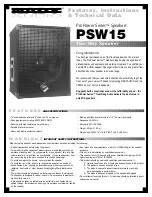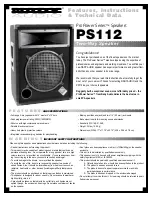
TUNING
THE
FAR2137S/12
RADAR
FOR
BIRD
DETECTION
While
the
larger,
60KW
FAR2167DS
radar
is
designed
specifically
as
a
“bird
radar”,
the
30KW
FAR2137S
absolutely
detects
birds.
On
large
tuna
super
seiners
(250
‐
300
foot
vessels)
from
Spain,
South
America
and
Asia,
most
use
a
couple
of
60kW
S
‐
band
radars
for
long
range
bird
detection
and
in
addition
some
use
one
30kW
S
for
short
range
bird
detection.
The
60kW
S
‐
Band
normally
are
installed
on
top
of
the
mast
and
approximate
detection
range
is
around
12
‐
14nm.
The
max
detection
range
is
around
18nm.
Because
large
seiners
usually
use
the
60KW
radars
with
high
gain
to
get
even
small
target
(flock)
detection,
they
have
a
lot
of
sea
clutter
and
the
screen
is
very
noisy,
especially
on
short
range,
so
they
use
30kW
S
for
short
range
bird
detection.
The
30KW
normally
is
installed
at
the
very
front
end
of
the
top
deck
or
on
top
of
the
wheelhouse
(a
lower
location
than
60kW
S).
This
location
is
almost
the
same
height
as
the
mast
location
on
smaller
fishing
vessels
of
80
‐
100
feet
or
so.
The
detection
range
of
FAR2137S
is
usually
up
to
around
8nm.
The
max
detection
range
normally
seen
is
12nm.
The
following
are
the
recommended
settings
to
get
started
with
detection
on
the
Furuno
FAR2137S:
1.
Turn
the
radar
on
while
away
from
pier
walls,
buildings
and
other
sources
of
physical
blockage
of
the
radar
beam.
Transmit
the
radar
for
10
‐
15
minutes
before
making
adjustments
so
that
the
magnetron
comes
to
a
stable
working
voltage
and
temperature.
For
best
results,
do
NOT
make
these
adjustments
in
port!
2.
Set
the
range
at
8nm
and
off
‐
center
(The
Off
‐
Center
button
puts
the
vessel
in
the
bottom
of
the
screen).
8nm
range
setting
is
optimal
to
get
the
best
effect
of
the
echo
zoom.
If
you
set
range
longer
than
8nm,
bird
echoes
get
small
and
are
not
easily
visible.
3.
Turn
Auto
A/C
“Off”
4.
Set
pulse
length
to
the
maximum
(“LONG”).
5.
Set
interference
rejection
to
“1”
or
lower.
6.
Set
echo
stretch
to
“2”.
7.
Set
echo
average
to
“2”.





















